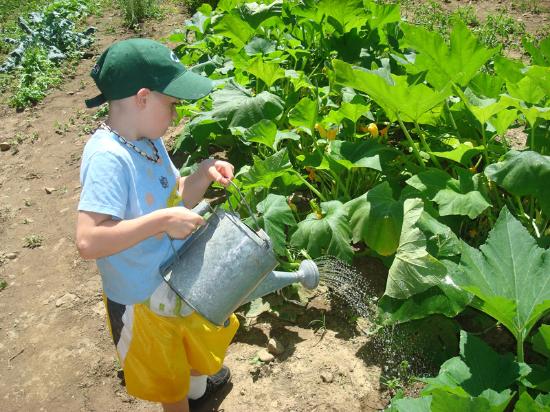A newly planted tree’s survival primarily depends on its establishment of a healthy root system. During the first two to three years, newly planted trees are susceptible to “transplant shock,” increased vulnerability to insects and diseases, and other stress-related issues. Encouraging root growth, minimizing growth in the canopy, and reducing stressful conditions during the establishment phase in a tree’s life cycle depends on how well you implement regular follow-up care.
Watering
The first step in caring for your new tree is to water it immediately after planting it. Maintaining a damp soil is essential during the first two to three in that consistent watering stimulates rapid root development. Applying one inch of water each week for the first year is recommended, for the next two seasons irrigate the tree as needed. There is a fine line between over-watering your tree and allowing aridity to progress.
Over-watering will decrease the amount of oxygen your tree receives, and drought causes a young tree to work harder to absorb water. To ensure you are giving your tree the right amount of water, you may want to purchase a “houseplant water meter.” When placed in the soil, this apparatus indicates whether the soil is wet or dry.
After diligently watering your tree for two years, its roots will have matured. Now the tree will be able to absorb water on its own, adapting to various weather conditions.
The Importance of Mulch
It is important to lay natural mulch around the base of your tree after you have planted it. Mulch is vital for your tree’s health in that it insulates the soil, retains water, limits weeds from sprouting, and prevents the soil from hardening. Before adding mulch, remove grass within 3 feet of the tree. For larger trees, you should remove grass within 10 feet of the tree. Spread mulch wood chips 2 to 4 inches deep; as you pour the mulch, avoid laying the mulch too close to the trunk of the tree.
When to Prune
Trimming a new tree should be done sparingly; limit pruning to dead and broken branches. Also, wait for the tree to have been planted for a few months before pulling out your pruning shears. The purpose of trimming a tree is to enhance flowering; therefore, pruning should be done according to season. Trees that flower during spring should not be pruned until their flowers disappear.
For trees that bloom in summer, pruning should be done in late winter or early spring. Never prune in the fall.
Identify Pest & Disease Problems
For assistance in pinpointing pest and disease affecting your new tree, contact your local Cooperative Extension agent. This individual is a volunteer Master Gardener who is knowledgeable about issues affecting newly planted trees. Extension agents can diagnose whether pests or diseases have become an issue, suggest solutions to repair the damage done, and answer additional questions about caring for newly planted trees.
NOTE:
Time-release fertilizer should only be added to the soil if soil fertility is low. Planting the tree in an area conducive to growth, watering the soil, and controlling pests and diseases should allow the young tree to naturally absorb the nutrients it needs from the soil. Never fertilize a stressed tree, and never use quick-release fertilizer on newly planted trees.
Caring for a young tree can be rewarding. With regular care, the likelihood that a young tree will become vulnerable to stress-related problems is greatly reduced.
American Tree Managers is a full-service Phoenix tree trimming and removal company in Arizona.
